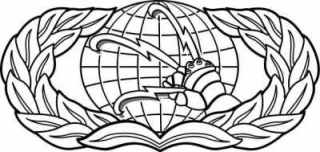that's actually a very complicated question, and there is no easy answer....
JPEG to DXF is a raster to vector conversion, requires clean source images and extensive vector editing/clean-up (before and) afterwards
AI/EPS to DXF is a vector to vector conversion, output is (sort of) equivalent to input
Inkscape is free and will do both conversions
Corel draw is not free and will do both
I'm not sure about inkscape, but corel's DXF is either segmented (curves are lots of short line segments) or splines (which only work right in some CAM software sometimes)
Ideally, for CNC, you want DXF with arcs (not splines or segments), and the arcs should be tangent continuous (smooth). CAD software uses arcs, vector graphics software does not use arcs, which is why DXF curves come out as either segments or splines.
Some machines work better with arcs because they run smoother. Some, like Mach3 machines, have constant velocity settings to make segmented curves work ok. Some machines, like old moving bed platforms can't handle segmented curves because they cause colossal machine vibration. And machines with low acceleration can't follow segments as smooth as they can follow arcs.
Ultimately DXF with (tangent) arcs is the best, and arcs work the same on all machines.
The question is, how to get from vectors to arcs.
In corel, you can use DXF TOOLS to export DXF with arcs (not sure but may not always produce tangent continuous arcs)
I use corel and v-carve pro to convert from EPS to DXF with nice tangent continuous arcs. That costs a lot but v-carve pro is a nice program for cnc, more-so if you have a router. That's the most perfect solution because v-carve pro does things to help detect and eliminate potential problems like duplicates, fragments, and excursions that might not cut as expected.
But now, sheetcam has features to convert from segments and splines to arcs, and export DXF (or gcode) with arcs. Sheetcam will not import AI/EPS but it will import SVG and DXF with splines, so it will work with corel or inkscape to indirectly convert AI/EPS/SVG/DXF to DXF with arcs.
also, adobe illustrator has an inexpensive plugin available called exdxf to export dxf with arcs.
so there are a number of ways to go, from free to uber expensive, with or without arcs,
since I use corel and v-carve pro, I haven't fully studied sheetcam's arc fitting capability, but a program with quality arc fitting for under $200 is hard to beat
on the design side, I like corel draw, but it's image tracing engine is messy, while inkscape uses open source tracing engines (POTRACE and AUTOTRACE I think), and autotrace is what I use, but how well that works is debatable and depends on the source image, you cannot just convert any old image to vectors with ease with any software. And corel does more than inkscape, so free is usually far from "perfect".
I'd start with inkscape for free design (and tracing), and then get sheetcam for the arc fitting, and then work toward getting corel draw in the future.
that's the free-est and perfect-est solution that I can think of at the moment....
I'm planning to eventually get some tutorials going to explain all that better....

